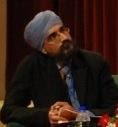Islamic
financial Institutions (IFIs) act as financial intermediaries between sources
of funds (deposits) and applications of funds (financing and investment).
Profit generated from the application of funds will be shared with the funds’
providers. A significant portion of IFIs’ sources of funds come from General
Investment Account (GIA) that has been structured based on mudharabah (profit
sharing) contract.
The contractual relationship between IFIs and depositors under the
Islamic mudharabah gives rise to the need of a mechanism to distribute IFIs’
Income to their GIA depositors.
I was first exposed to the methodology of profit distribution in year
2000 when I attended a training in Brunei that was conducted by Bank Islam
Research Institute (BIRT). I learnt that the process involved two main steps:
- Calculating of the amount of income to be distributed to depositors (termed as distributable income)
- Calculating the rates of returns by proportionating the distributable income into various types of deposits that an IFI offers to its customers
Few
years later, when I was implementing an IT system in one of the banks in
Malaysia, during requirement study process, I got hold of Bank Negara Malaysia(BNM) Framework Rate of Return that was issued on Oct 16, 2001, and to be
implemented by Oct 1, 2004. BNM issued the framework as part of an “effort to
standardise the method on the calculation of rate of return for the Islamic
banking industry (IBI)”.
The
framework has been further revised with the latest update issued on March 13,
2013.
- Calculation Table (CT) — To guide the IBIs in deriving the net distributable income to the depositors and the bank by incorporating the income generated from the assets, the relevant shared expenses and allowances between the bank and the depositors, and income attributable to the various types of depositors.
- Distribution Table (DT) — To guide the bank on the proper distribution of the net distributable income posted from the CT, IFIs are required to maintain separate CTs and DTs if they manage multiple funds.
CT
is quite straight forward to work on as the information required is normally
readily available from the finance department. However, it requires
finalisation of income and expenses for the month before distributable income
amount can be fixed. In order to avoid too significant fluctuation of
distributable income from month to month and to maintain competitiveness with
conventional banks.
IFIs
practice income smoothing using Profit Equalisation Reserve (PER) following BNM
Guidelines on PER. PER is a provision of income where during profitable periods
some income is put aside to be reserved for not so profitable periods.
DT
requires more effort
Every
month, IFIs are required to keep track of the average daily amount of their
deposits segregated by types of deposits. Different types of deposits will have
to be defined for mudharabah and non-mudharabah products. For mudharabah, the
types of deposits will be further segregated based on various profit sharing
ratios (PSRs) offered to depositors.
Based
on general practice by Malaysian local IFIs, new rates will be declared every
16th of the month and will be effective until 15th of the following month. The
process to arrive at the rates will start on the 1st of previous month.
For
example, for the rates to be declared on Feb 16, 2014, the process to
accumulate deposit average daily amount would start from Jan 1, 2014 until Jan
31, 2014. From Feb 1 to 15, 2014, IFIs will be finalising their income and
expenses so that they could also work on their CTs to determine the net
distributable income (NDI).
The
NDI is then fed into DTs to run simulation of rates calculations. Normally IFIs
would run few simulations before IFIs can finalise the rates of returns for the
month.
Based
on my observations, Malaysian local IFIs normally already have an idea on what
rates are to be declared. They will work backwards using PER to adjust their
Distributable Income in order to arrive at their desirable rates.
[Othman Abdullah is the Silverlake Group of Cos MD for Islamic banking
responsible for Silverlake Axis Integrated Islamic Banking Solution product
development, marketing support and implementation services. This article appeared in THE MALAYSIAN RESERVE, 10 March 2014]


No comments:
Post a Comment